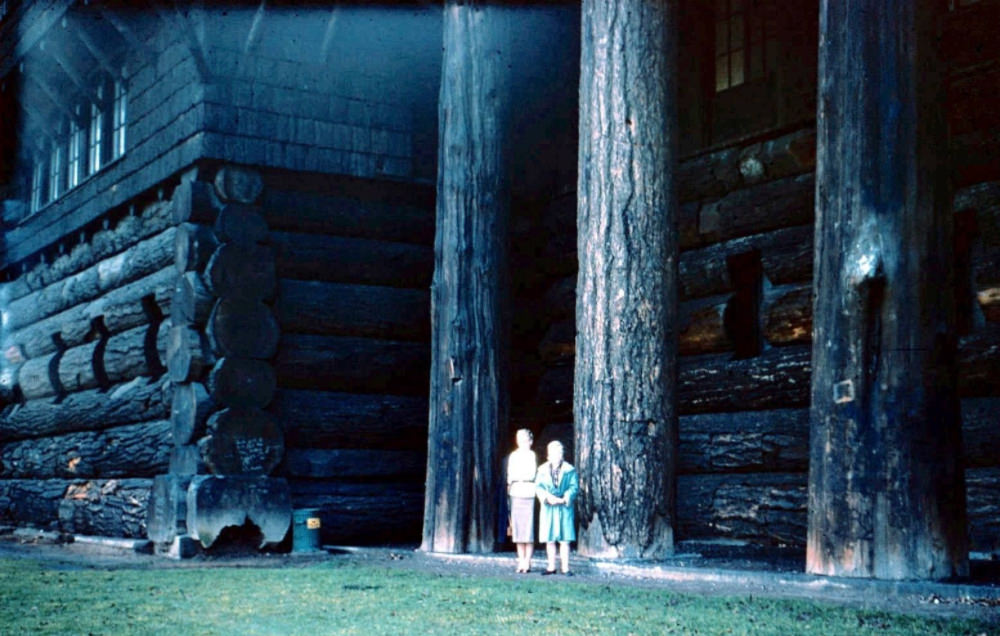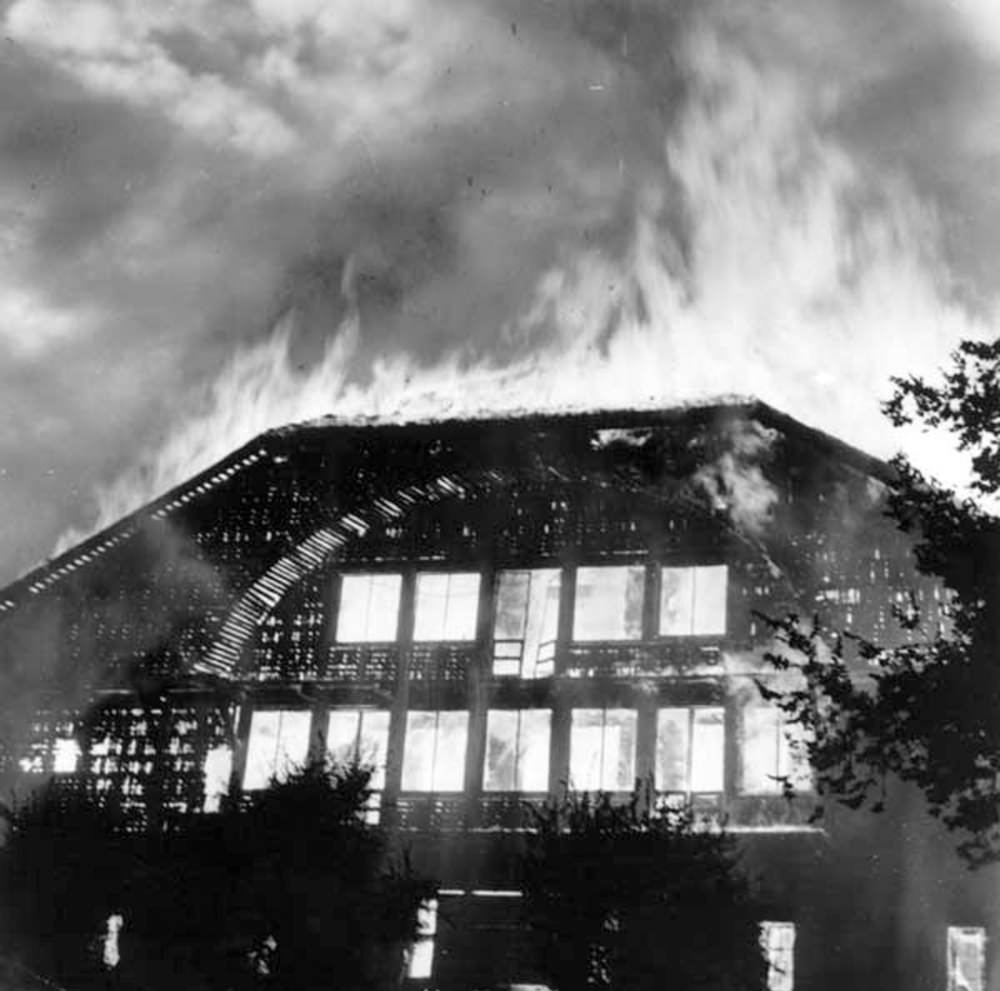It is estimated that the Forestry Building was the world’s largest log cabin (approximately seven stories) at the Lewis and Clark Centennial Exposition. Construction cost about $30,000 (about $935,000.) Most of the giant logs used in the building were purchased from old-growth trees in Columbia County, Oregon, by American businessman and philanthropist Simon Benson.
Architecture and design of the building
Architect Ion Lewis from the Portland architectural firm designed the Forestry Building for the massive log cabin. There were 54 massive, unpeeled Douglas Fir logs adorning the interior of the Forestry Building. This log structure supported a 2-story cruciform aisle illuminated by skylights. The building housed an exhibit about the forestry industry, local wildlife, and Native American artifacts and photos.
The Carelessness of the Government
After the 1905 exposition, Portland let the building decay and decline, which continued for many years. There were several occasions when embers fell on the roof, either from nearby building fires or wood-burning stoves. The fire department responded quickly to keep it from burning down. In the 1940s, the building was slated to be demolished since it had become a safety hazard; it was built with whole logs that had warped and had become hazardous, and there were species of insects eating the wood, such as bark beetles and termites.
In the 1950s, the Chamber of Commerce took up a collection to restore the place. By this point, people realized it was irreplaceable. It was still possible to find old-growth timber used in its construction, but it was more profound in the forest and less uniform. Identifying 52 matching trees would be extremely difficult, if not impossible, and since the logs would have to be trucked to the site rather than floated, log handling systems would have to be designed to protect the bark.
During the state’s sesquicentennial celebration in 1959, most of the building had been restored to its former glory. According to an Oregonian report, it now offers a “priceless collection of antique and modern logging exhibits.” Another historical piece was the first sheet of Douglas Fir plywood produced, manufactured by the Autzen family’s Portland Manufacturing Company in 1904.
Fire incident that destroyed the building
The Forestry Building’s caretaker locked up the building around 5:30 p.m. on August 17, 1964. Neighbors noticed heavy flames erupting from inside the building. When the fire crews arrived at the scene around 6:15 p.m., it was clear that nothing short of direct divine intervention could put it out.
The Oregonian reported the next day:
There was never a hope of saving the building. Nothing was saved from the inside.
#1 Exterior view of the Lewis and Clark Exposition Forestry Building, Portland, 1905.

#2 Construction of the old Forestry Building, 1904.

#3 A 1904 postcard showing the interior scene in the Forestry Building, with the central colonnade of matched old-growth fir trees.

#4 The immense Forestry Building is shown in 1905 during the Lewis & Clark Centennial Exposition, for which it was built.

#5 Two women sitting in the upper balcony of the Forestry Building, 1905. This image really displays how massive the support logs were.

#6 The interior of the Forestry Building, ca. 1905.

#7 Exhibits within the Forestry Building during the Lewis and Clark Centennial Exposition, 1905.

#8 The interior of the Forestry Building at the Lewis and Clark Centennial Exposition, Portland, 1905.

#9 The Forestry Building, 1907.

#10 The interior of the Forestry Building, 1907.

#11 The interior of the Forestry Building, 1907.

#12 An unusually highly detailed look at the Forestry Building, ca. 1910.

#13 The Forestry Building, 1938.

#14 The interior of the Forestry Building, 1948.

#15

#16 The Forestry Building in 1956.

#17 A photo by A.O. Biggerstaff made in the year of the Oregon Centennial, in 1959, just a few years before the catastrophic fire.

#18 The Forestry Building in Portland, ca. 1959.

#19 The Forestry Building as it appeared around dusk on the night of the fire, after the flames had died down a little, Portland, 1964.

#20

#21






